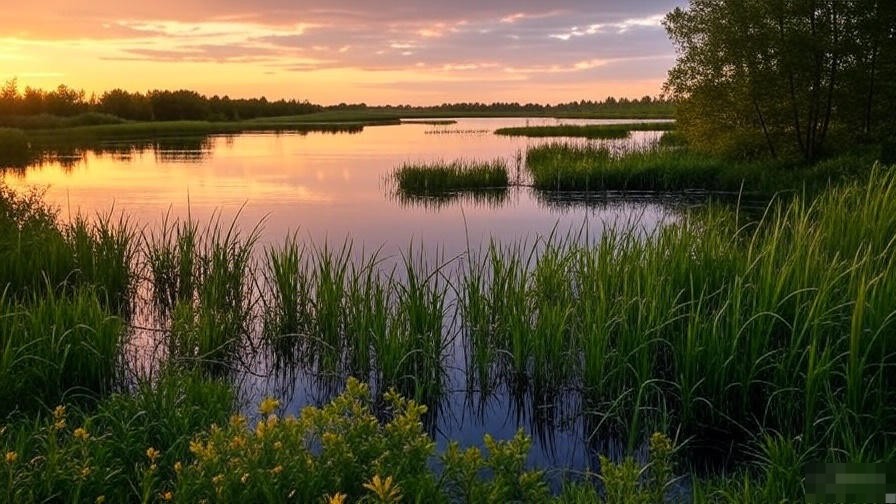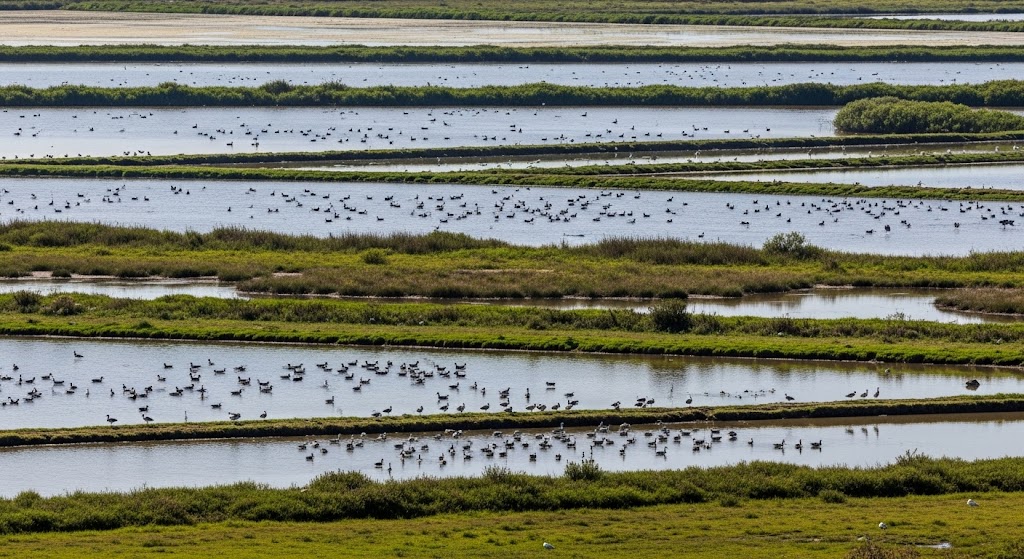New Delhi, India – As the world grapples with climate change and biodiversity loss, India’s Ramsar Wetlands stand as vital bastions of ecological health and human well-being. List Ramsar Wetlands Site in India internationally recognized sites, designated under the Ramsar Convention, are not just beautiful landscapes; they are critical ecosystems providing a myriad of benefits, from supporting diverse wildlife to ensuring water security for millions.

The Growing Network: India’s Commitment to Wetland Conservation
India has consistently demonstrated its commitment to wetland conservation, and the number of Ramsar sites within its borders continues to grow. As of June 2025, India boasts an impressive 91 Ramsar sites, making it the country with the highest number of such sites in Asia and the third highest globally, after the United Kingdom and Mexico.
Recent additions in 2024 and 2025 further strengthen this network. Notable new sites include:
- From Karnataka (2024): Ankasamudra Bird Conservation Reserve, Aghanashini Estuary, and Magadi Kere Conservation Reserve.
- From Tamil Nadu (2024 & 2025): Karaivetti Bird Sanctuary, Longwood Shola Reserve Forest, Sakkarakottai Bird Sanctuary, and Therthangal Bird Sanctuary.
- From Rajasthan (2025): Khichan Wetland (famous for hosting thousands of migratory Demoiselle cranes) and Menar Wetland (known as the “Bird Village” for its community-led conservation efforts).
- From Sikkim (2025): Khecheopalri Wetland.
- From Jharkhand (2025): Udhwa Lake.
These additions highlight the diverse range of wetland types in India, from high-altitude lakes and river floodplains to coastal mangroves and human-made reservoirs.
Why are Ramsar Wetlands so Important?
Ramsar sites are recognized for their exceptional ecological value, offering crucial “ecosystem services” that benefit both nature and humanity:
- Biodiversity Hotspots: They are cradles of biological diversity, providing habitats for countless species, particularly migratory birds, fish, amphibians, and unique flora. Sites like Sundarbans are home to critically endangered species like the northern river terrapin and the vulnerable fishing cat. Keoladeo National Park, a UNESCO World Heritage site, is a crucial stopover for migratory birds from across Central Asia.
- Water Purification and Recharge: Wetlands act as natural filters, purifying water by removing pollutants and recharging groundwater supplies.
- Flood Control: They absorb excess floodwaters, mitigating the impact of floods and protecting surrounding communities.
- Climate Change Mitigation: Wetlands store significant amounts of carbon, particularly peatlands, playing a vital role in regulating the climate and reducing greenhouse gases.
- Livelihood Support: Millions of people depend on wetlands for their livelihoods, deriving resources like fish, water, and plant materials for food, income, and cultural practices.
- Ecotourism Potential: Many Ramsar sites offer immense ecotourism potential, attracting visitors and generating revenue that can be reinvested in conservation.
Threats on the Horizon: The Challenges to Ramsar Wetlands Site in India

Despite their protected status, India’s Ramsar wetlands face significant threats that jeopardize their ecological integrity:
- Pollution: Industrial discharge, agricultural runoff, and domestic waste pollute wetland waters, harming aquatic life and overall ecosystem health.
- Encroachment and Habitat Loss: Illegal construction, unsustainable urbanization, and agricultural expansion lead to the shrinking and degradation of wetland areas. Studies show significant wetland loss in major Indian cities.
- Alteration of Hydrological Regimes: Dam construction, water diversion, and changes in natural water flow disrupt the delicate balance of wetland ecosystems.
- Invasive Species: Introduction of non-native species can outcompete native flora and fauna, disrupting the ecological balance.
- Over-harvesting of Resources: Unsustainable fishing practices and over-extraction of other wetland resources can deplete vital populations.
- Climate Change: Changes in rainfall patterns, rising temperatures, and extreme weather events directly impact wetland hydrology and biodiversity.
- Mismanagement and Lack of Enforcement: While the Ramsar tag provides accreditation, effective management, monitoring, and strict enforcement of conservation policies are crucial to prevent ongoing degradation. Cases like Sambhar Lake facing illegal salt mining highlight the need for stronger action.
The Way Forward: Sustainable Conservation and Community Engagement
The increasing number of Ramsar Wetlands Site in India is a commendable achievement, but the true measure of success lies in their effective conservation and sustainable management. This requires a multi-pronged approach:
- Strengthening Legal and Policy Frameworks: Robust implementation of the Wetlands (Conservation and Management) Rules and other environmental laws is paramount.
- Integrated Management Plans: Developing and effectively implementing comprehensive management plans for each Ramsar site, addressing specific threats and conservation priorities.
- Controlling Pollution: Strict measures to control industrial and domestic pollution, promoting sustainable agricultural practices to minimize runoff.
- Preventing Encroachment: Rigorous monitoring and enforcement to prevent illegal construction and encroachment on wetland areas.
- Climate Change Adaptation: Implementing strategies to help wetlands adapt to the impacts of climate change, such as water management techniques and restoration of natural buffers.
- Community Participation: Empowering local communities who depend on these wetlands to participate in conservation efforts, integrating their traditional knowledge with modern conservation practices. This ensures that conservation is sustainable and benefits those directly connected to these vital ecosystems.
- Awareness and Education: Raising public awareness about the immense value of wetlands and the threats they face, fostering a sense of responsibility and encouraging responsible tourism.
India’s Ramsar wetlands are irreplaceable natural treasures. By prioritizing their protection, we not only safeguard incredible biodiversity but also secure essential resources for future generations. The journey of wetland conservation in India is ongoing, demanding continuous dedication, collaborative efforts, and a vision for a truly sustainable future.
List of Latest Updated Ramsar Wetlands Site in India
When we talk about the details of Ramsar Wetlands Site in India, As of June 2025, India has 91 Ramsar Sites, a testament to its commitment to wetland conservation. This makes India the country with the highest number of Ramsar sites in Asia and the third highest globally.
Here’s a comprehensive list of Ramsar Wetland Sites in India, categorized by State/Union Territory:
Andhra Pradesh (1)
- Kolleru Lake
Assam (1)
- Deepor Beel
Bihar (3)
- Kanwar Taal or Kabar Taal Lake
- Nagi Bird Sanctuary
- Nakti Lake
Goa (1)
- Nanda Lake
Gujarat (4)
- Khijadiya Wildlife Sanctuary
- Nalsarovar Bird Sanctuary
- Thol Lake Wildlife Sanctuary
- Wadhvana Wetland
Haryana (2)
- Bhindawas Wildlife Sanctuary
- Sultanpur National Park
Himachal Pradesh (3)
- Chandra Taal
- Pong Dam Lake
- Renuka Wetland (Smallest Ramsar site in India)
Jammu & Kashmir (5)
- Hokersar Wetland
- Hygam Wetland Conservation Reserve
- Shallabugh Wetland Conservation Reserve
- Surinsar-Mansar Lakes
- Wular Lake
Jharkhand (1)
- Udhwa Lake (Newly added in 2025)
Karnataka (4)
- Aghanashini Estuary (Added in 2024)
- Ankasamudra Bird Conservation Reserve (Added in 2024)
- Magadi Kere Conservation Reserve (Added in 2024)
- Ranganathittu Bird Sanctuary
Kerala (3)
- Ashtamudi Wetland
- Sasthamkotta Lake
- Vembanad-Kol Wetland
Ladakh (2)
- Tso Kar Wetland Complex (High Altitude Ramsar Site)
- Tsomoriri Lake (High Altitude Ramsar Site)
Madhya Pradesh (5)
- Bhoj Wetland
- Sakhya Sagar
- Sirpur Wetland
- Tawa Reservoir (Added in 2024)
- Yashwant Sagar
Maharashtra (3)
- Lonar Lake
- Nandur Madhameshwar
- Thane Creek
Manipur (1)
- Loktak Lake
Mizoram (1)
- Pala Wetland
Odisha (6)
- Ansupa Lake
- Bhitarkanika Mangroves
- Chilika Lake (Oldest Ramsar Site in India, designated 1981)
- Hirakud Reservoir
- Satkosia Gorge
- Tampara Lake
Punjab (6)
- Beas Conservation Reserve
- Harike Wetland
- Kanjli Wetland
- Keshopur-Miani Community Reserve
- Nangal Wildlife Sanctuary
- Ropar Wetland
Rajasthan (4)
- Keoladeo National Park (Oldest Ramsar Site in India, designated 1981)
- Khichan Wetland (Newly added in June 2025)
- Menar Wetland (Newly added in June 2025)
- Sambhar Lake
Sikkim (1)
- Khecheopalri Wetland (Newly added in 2025)
Tamil Nadu (20) – Has the highest number of Ramsar Sites in India
- Chitrangudi Bird Sanctuary
- Gulf of Mannar Marine Biosphere Reserve
- Kanjirankulam Bird Sanctuary
- Karaivetti Bird Sanctuary (Added in 2024)
- Karikili Bird Sanctuary
- Kazhuveli Bird Sanctuary (Added in 2024)
- Koonthankulam Bird Sanctuary
- Longwood Shola Reserve Forest (Added in 2024)
- Nanjarayan Bird Sanctuary (Added in 2024)
- Pallikaranai Marsh Reserve Forest
- Pichavaram Mangrove
- Point Calimere Wildlife and Bird Sanctuary
- Sakkarakottai Bird Sanctuary (Newly added in 2025)
- Suchindram Theroor Wetland Complex
- Therthangal Bird Sanctuary (Newly added in 2025)
- Udhayamarthandapuram Bird Sanctuary
- Vaduvur Bird Sanctuary
- Vedanthangal Bird Sanctuary
- Vellode Bird Sanctuary
- Vembannur Wetland Complex
Tripura (1)
- Rudrasagar Lake
Uttar Pradesh (10)
- Bakhira Wildlife Sanctuary
- Haiderpur Wetland
- Nawabganj Bird Sanctuary
- Parvati Arga Bird Sanctuary
- Saman Bird Sanctuary
- Samaspur Bird Sanctuary
- Sandi Bird Sanctuary
- Sarsai Nawar Jheel
- Sur Sarovar (Keetham Lake)
- Upper Ganga River (Brijghat to Narora Stretch)
Uttarakhand (1)
- Asan Barrage
West Bengal (2)
- East Kolkata Wetlands
- Sundarban Wetland (Largest Ramsar Wetlands Site in India)
This list is subject to updates as new wetlands are continually identified and designated under the Ramsar Convention. Kindly visit the Ramsar Website to get updated information about Ramsar Wetlands Site in India
How to Prepare for UPPSC PCS Interview After Mains – Expert Strategy







